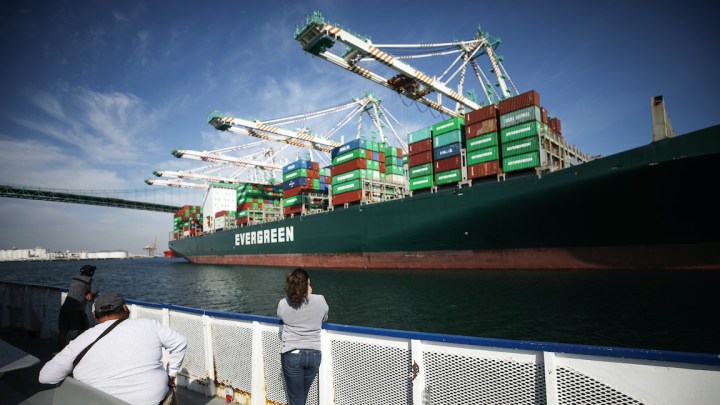
L.A.’s latest traffic jam: Dozens of container ships waiting to be unloaded
L.A.’s latest traffic jam: Dozens of container ships waiting to be unloaded

On a typical morning — before the pandemic — if you’d looked out across the Pacific from San Pedro, the southernmost part of Los Angeles, you might have seen, at most, one ship at anchor, waiting to get into the ports of Long Beach and Los Angeles.
This morning at 7 a.m.? You’d have seen 26 container ships.
Those ships are full of the furniture, appliances, gym equipment and building materials this economy’s been devouring during the pandemic. And with consumers set to spend a whole lot more this year, that backlog isn’t going away anytime soon. How is that likely to affect consumers as the economy heats up?
The kind of backlog of container ships that we’re seeing now started around the end of last year, said Kip Louttit, executive director of the Marine Exchange of Southern California.
“We jumped from zero to one container ships at anchor to about 35 the first of January,” he said.
Ships are waiting longer inside the port, too, according to Gene Seroka, executive director of the Port of Los Angeles, and fulfillment centers are overloaded.
“When a container is waiting at a warehouse, it’s now sitting for about eight days. And that’s usually three and a half days during pre-pandemic times,” Seroka said.
There are two reasons for the backup.
First, there’s been a surge in global shipping, thanks to online shopping.
Second, there’s COVID-19.
“Hopefully as we get additional longshoremen vaccinated, truckers vaccinated, we can add more workers back to the workforce and be able to address some of the ongoing issues that we’re seeing,” said Jonathan Gold, who follows supply chain policy for the National Retail Federation.
If the backlogs continue, the cost of shipping will rise, according to economist Kadee Russ at University of California, Davis. She said that could be passed on to consumers.
But a bigger issue, Russ said, is whether manufacturers will be able to get the parts and materials they need.
“And to the degree that they can’t get those, that introduces a whole other type of uncertainty into their production decisions and their hiring decisions.”
At the Port of Los Angeles, Executive Director Seroka expects backlogs to continue at least until mid-summer.
There’s a lot happening in the world. Through it all, Marketplace is here for you.
You rely on Marketplace to break down the world’s events and tell you how it affects you in a fact-based, approachable way. We rely on your financial support to keep making that possible.
Your donation today powers the independent journalism that you rely on. For just $5/month, you can help sustain Marketplace so we can keep reporting on the things that matter to you.

















